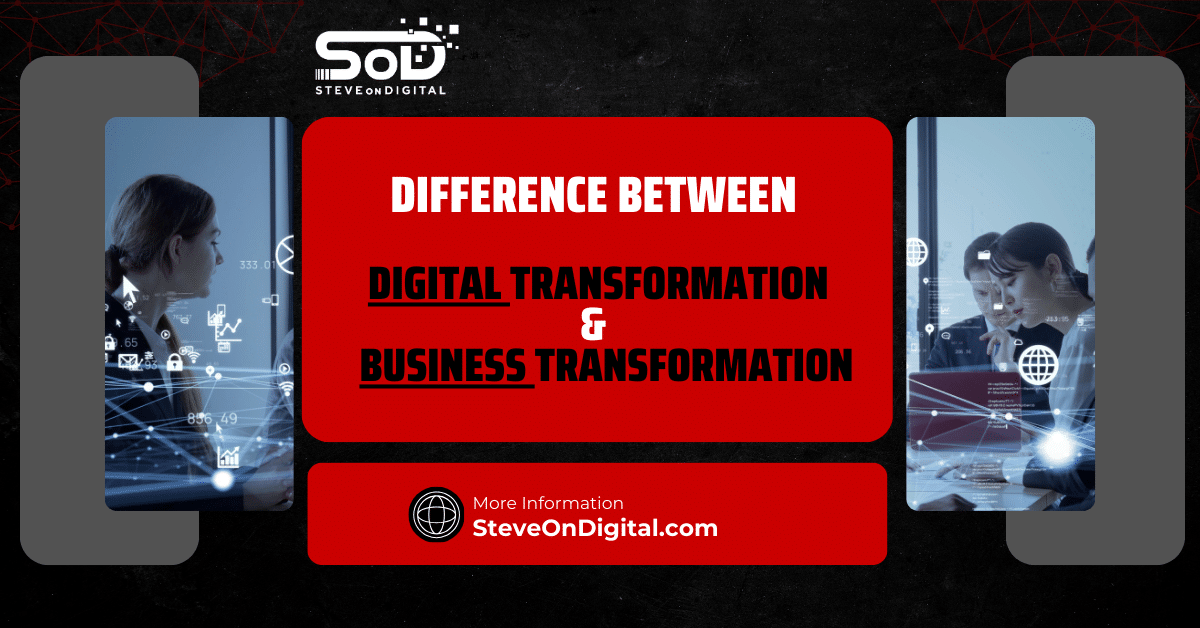Creating an innovation roadmap is essential for any business that wants to stay competitive and grow. An innovation roadmap is a strategic plan that outlines the steps a business will take to develop new products, services, or processes.
From my experience, a well-structured innovation roadmap helps in setting clear innovation goals, aligning initiatives with business strategy, and efficiently allocating resources. It also acts as a guide, ensuring all stakeholders are on the same page and working towards the company’s long-term objectives.
I’m Steve, a digital transformation expert with a strong background in electrical engineering, an MBA, and a master’s in Project Management. I excel at helping SMEs navigate the digital landscape with practical insights. Let’s begin!
Overview Of Innovation Roadmaps
An innovation roadmap is a strategic plan that outlines the steps a business will take to develop new products, services, or processes. It’s essential for aligning innovation initiatives with the overall business strategy, ensuring that every innovation effort supports the company’s long-term goals. According to a study by McKinsey, companies that effectively manage innovation processes are 2.5 times more likely to have superior financial performance.
Purpose Of The Innovation Roadmap
The primary purpose of an innovation roadmap is to guide a business through the innovation process, from idea generation to market launch. It helps in setting clear innovation goals, allocating resources efficiently, and tracking progress. For small business owners, an innovation roadmap provides a structured approach to manage innovation projects and achieve sustainable growth.
Understanding Innovation Roadmaps
What Is An Innovation Roadmap?
An innovation roadmap is a visual representation of a company’s innovation strategy. It includes timelines, key milestones, and objectives, offering a clear path for developing new ideas and bringing them to market. The roadmap acts as a guide for managing innovation projects, ensuring that all stakeholders are aligned and working towards the same goals.
Key Elements Of An Innovation Roadmap
The essential components of an innovation roadmap include:
- Timelines: Define the schedule for various innovation activities.
- Milestones: Key points in the innovation process where progress is reviewed.
- Objectives: Specific goals that the innovation projects aim to achieve.
- Resources: Allocation of budget, personnel, and other resources necessary for innovation.
| Element | Description |
| Timelines | Define the schedule for various innovation activities. |
| Milestones | Key points in the innovation process where progress is reviewed. |
| Objectives | Specific goals that the innovation projects aim to achieve. |
| Resources | Allocation of budget, personnel, and other resources necessary for innovation. |
Benefits Of Using Innovation Roadmaps
Innovation roadmaps offer several benefits, including:
- Improved Strategic Alignment: Ensures that innovation efforts are in line with the overall business strategy.
- Better Resource Allocation: Helps in efficiently allocating resources to different innovation projects.
- Enhanced Communication: Provides a clear communication tool for internal and external stakeholders, facilitating better collaboration.
Building An Innovation Roadmap
Initial Setup
The first step in creating an innovation roadmap is to define the scope and objectives. This involves identifying the key areas where innovation is needed and setting clear, achievable goals. I recommend starting with a brainstorming session to gather input from various stakeholders. This helps in ensuring that the roadmap reflects the diverse perspectives within the company.
| Step | Description |
| Define Scope and Objectives | Identify key areas where innovation is needed and set clear, achievable goals. |
| Conduct SWOT Analysis | Identify strengths, weaknesses, opportunities, and threats related to innovation initiatives. |
| Identify Innovation Opportunities | Use market research, customer feedback, and competitor analysis to find opportunities. |
SWOT Analysis
Conducting a SWOT analysis is crucial in the initial setup phase. This analysis helps in identifying the strengths, weaknesses, opportunities, and threats related to your innovation initiatives. For example, if you are a small business owner in the tech industry, understanding your technological strengths and market opportunities can help in setting realistic innovation goals.
Identifying Innovation Opportunities
Identifying innovation opportunities requires a deep understanding of market trends and customer needs. Techniques such as market research, customer feedback, and competitor analysis can provide valuable insights. For instance, by analyzing market trends in electric cars, you can identify potential areas for innovation that align with future market demands.
Strategic Planning For Innovation
Innovation is not just about coming up with new ideas; it’s about strategically planning how to bring those ideas to life. I’ve learned through my journey that a solid innovation strategy can make the difference between a groundbreaking innovation and a missed opportunity.
Setting Innovation Goals
Setting clear and achievable innovation goals is the first step in any successful innovation strategy. Your goals should be specific, measurable, attainable, relevant, and time-bound (SMART). For instance, when I started focusing on digital transformation, my goal was to assist 1,000,000 business owners in navigating the digital landscape. This goal was clear, ambitious, yet achievable with a structured approach.
Aligning With Business Strategy
It’s crucial to align your innovation roadmap with your overall business strategy. This ensures that every innovation initiative supports your long-term objectives. For example, if your business strategy focuses on customer satisfaction, your innovation goals might include developing new products that enhance customer experience or improve existing ones. According to PwC, 54% of companies struggle to align innovation strategy with business strategy, highlighting the importance of this alignment.
Strategic Objectives And Milestones
Defining strategic objectives and setting key milestones help in tracking progress and keeping the innovation process on track. Objectives should be linked to the overall business goals, while milestones provide checkpoints to assess progress. For instance, in one of my innovation projects, I set quarterly milestones to review and adjust our innovation roadmap, ensuring we stayed aligned with our strategic goals.
Managing Innovation
Effective innovation management is critical to turning ideas into successful innovations. It involves coordinating activities, resources, and people to achieve innovation goals.
Innovation Management Process
The innovation management process includes several stages: idea generation, idea screening, concept development, testing, and commercialization. Each stage requires careful planning and execution. From my experience, having a structured innovation management process helps in systematically moving from one stage to another, reducing the risk of failure.
| Stage | Description |
| Idea Generation | Gathering ideas from various sources, including brainstorming and market research. |
| Idea Screening | Evaluating ideas to select the most promising ones. |
| Concept Development | Developing selected ideas into detailed concepts. |
| Testing | Prototyping and testing concepts to validate their feasibility. |
| Commercialization | Launching the final product or service into the market. |
Roles And Responsibilities
Clearly defining roles and responsibilities within your team is essential for effective innovation management. Each team member should understand their role in the innovation process. In my projects, I assign specific roles such as project leader, innovation champion, and team members responsible for different aspects of the innovation initiative. This clarity helps in managing innovation projects more effectively.
Tracking Progress And Measuring Success
Monitoring progress and measuring success are vital for continuous improvement. Use key performance indicators (KPIs) to track progress and assess the impact of your innovation initiatives. For example, I use metrics such as time-to-market, return on investment (ROI), and customer feedback to evaluate the success of my innovation projects.
Engaging Stakeholders
Engaging both internal and external stakeholders is crucial for the success of any innovation project. Stakeholders can provide valuable insights, resources, and support.
Internal Stakeholders
Involving internal stakeholders like employees, managers, and executives is important for gaining their support and commitment. Internal stakeholders can help in identifying innovation opportunities, providing resources, and facilitating implementation. In my experience, regular communication and involving internal stakeholders in the innovation process foster a sense of ownership and collaboration.
External Stakeholders
Engaging external stakeholders such as customers, suppliers, and partners can provide additional insights and resources. For instance, customer feedback can highlight areas for improvement and spark new ideas. In my digital transformation projects, I often collaborate with external partners to leverage their expertise and resources, enhancing the innovation process.
Effective Communication Strategies
Clear and effective communication is key to successful stakeholder engagement. Use various communication channels like meetings, newsletters, and online platforms to keep stakeholders informed and involved. From my experience, regular updates and transparent communication help in building trust and ensuring stakeholder support.
Innovation Process And Execution
Executing innovation projects systematically ensures that ideas are effectively translated into tangible outcomes.
Structured Approach To Innovation
A structured approach to innovation involves following a systematic process from idea generation to commercialization. This includes planning, execution, monitoring, and adjustment. For example, in my projects, I use a phased approach to manage innovation activities, ensuring that each phase is completed before moving to the next.
Development Phase
The development phase involves turning ideas into prototypes and testing them. This phase is critical for identifying potential issues and making necessary adjustments. I prioritize customer feedback during this phase to ensure that the final product meets market needs and expectations.
Managing Innovation Projects
Project management techniques such as Agile and Scrum can be effective in managing innovation projects. These methods involve iterative development, continuous feedback, and flexibility to adapt to changes. In my experience, using Agile methodologies helps in managing innovation projects more efficiently, allowing for quick adjustments and improvements.
Monitoring And Reviewing The Roadmap
Keeping an innovation roadmap effective requires constant monitoring and reviewing. It’s not a one-and-done task; it’s a continuous process that evolves as your business and market conditions change.
Regularly Review And Update
Regular reviews and updates are essential to ensure that your innovation roadmap stays relevant and aligned with your business goals. I make it a point to review my roadmap quarterly. This practice helps me identify any deviations from the plan and make necessary adjustments. A study by Gartner shows that companies that frequently review their innovation roadmaps are 30% more likely to reach their innovation goals.
Feedback And Adjustments
Gathering feedback from both internal and external stakeholders is crucial. It provides insights into what’s working and what needs improvement. For instance, I often hold feedback sessions with my team and customers to understand their perspectives. This feedback helps me make informed adjustments to the innovation roadmap, ensuring it remains practical and effective.
Maintaining Flexibility
Flexibility is key to an effective innovation roadmap. The market is always changing, and your roadmap should be able to adapt. I’ve learned to keep my roadmap flexible, allowing for changes in market trends, customer preferences, and technological advancements. Flexibility ensures that you can pivot when necessary and stay ahead of the competition.
Innovation Scenarios And Future Market Trends
Preparing for future market trends is vital for sustaining innovation. Scenario planning helps anticipate potential changes and prepare accordingly.
Scenario Planning
Scenario planning involves creating different future scenarios based on current market trends and potential developments. It’s a technique I use to prepare for uncertainties. By considering various possibilities, I can develop strategies to address potential challenges and opportunities. For example, in the face of the electric cars boom, I plan for scenarios where my digital transformation strategies might need to adapt to new technologies.
Adapting To Market Changes
Staying competitive requires adapting to market changes. Strategies such as continuous market research and agile innovation processes help businesses stay relevant. For small business owners, it’s crucial to monitor market trends and be ready to adjust your strategies. According to Deloitte, companies that quickly adapt to market changes are more likely to maintain a competitive advantage.
Future Market Insights
Predicting and preparing for future market developments can provide a significant edge. Utilizing market research tools and analyzing data trends can offer valuable insights. I use tools like Google Trends and market analysis reports to stay informed about potential future developments. This proactive approach helps in shaping a forward-thinking innovation roadmap.
Case Studies And Examples
Learning from others’ successes and failures can provide valuable insights for creating your innovation roadmap.
Successful Innovation Roadmaps
Examining successful innovation roadmaps from various industries can offer practical insights. For instance, companies like Apple and Tesla have well-documented innovation strategies that highlight the importance of aligning innovation with business goals and maintaining flexibility. Studying such examples helps in understanding what works and how to implement similar strategies.
Lessons Learned
Key takeaways from successful case studies can guide your innovation efforts. For example, one lesson I’ve learned is the importance of stakeholder engagement. Successful companies consistently involve their stakeholders in the innovation process, ensuring that everyone is aligned and committed to the innovation goals.
Best Practices
Implementing best practices can enhance the effectiveness of your innovation roadmap. Some best practices include setting clear innovation goals, regularly reviewing and updating the roadmap, gathering feedback, and maintaining flexibility. Adopting these practices can lead to successful innovation outcomes and sustainable growth.
Tools And Resources
Having the right tools and resources can significantly improve your innovation management process.
Innovation Roadmapping Tools
There are several tools available for innovation roadmapping, such as Aha!, Roadmunk, and ProductPlan. These tools help in visualizing the innovation process, setting milestones, and tracking progress. I’ve found these tools to be invaluable in managing my innovation projects efficiently.
Resources For Innovation Management
Access to additional resources and materials can enhance your understanding of innovation management. Websites like Harvard Business Review and MIT Sloan Management Review offer articles and case studies on innovation strategies. These resources provide valuable insights and keep you updated with the latest trends and practices in innovation management.
Further Reading And Learning
Continuously learning about innovation is crucial for staying ahead. Recommended books such as “The Innovator’s Dilemma” by Clayton Christensen and “Crossing the Chasm” by Geoffrey Moore offer deep insights into innovation strategies. Online courses from platforms like Coursera and edX also provide valuable knowledge and skills for managing innovation.
Final Thoughts
Summary Of Key Points
To sum up, an effective innovation roadmap involves regular reviews and updates, gathering feedback, maintaining flexibility, planning for future scenarios, and adapting to market changes. Learning from successful case studies and utilizing the right tools and resources can further enhance your innovation efforts.
Encouragement To Innovate
Embrace innovation as a continuous journey. The business landscape is always evolving, and staying innovative is key to long-term success. Don’t be afraid to experiment and take calculated risks. Innovation is about creating value and staying relevant in a competitive market.
Next Steps
Start by setting clear innovation goals and aligning them with your business strategy. Use the insights and best practices shared in this article to create a comprehensive and flexible innovation roadmap. Regularly review and update your roadmap, gather feedback, and be ready to adapt to changes. With a well-structured innovation roadmap, you can navigate the innovation journey effectively and achieve sustainable growth.




